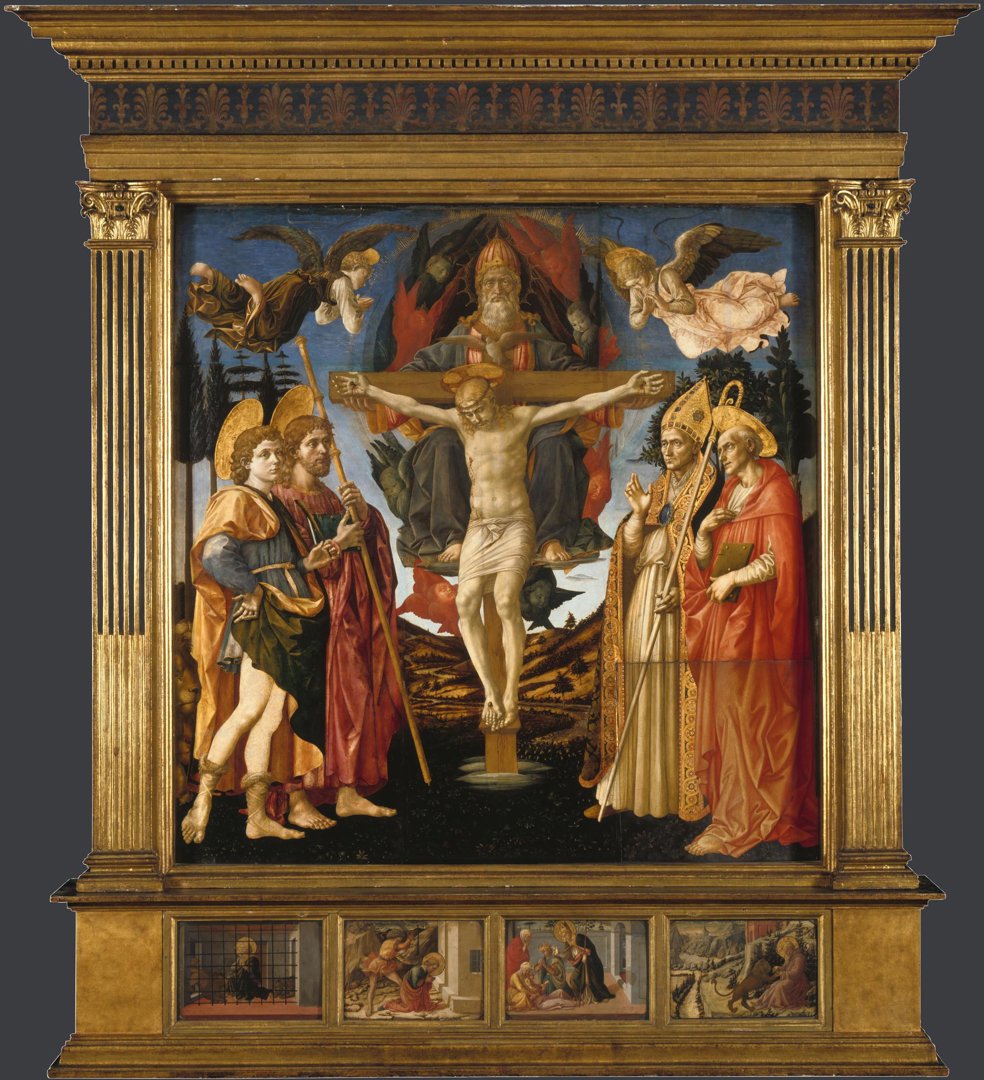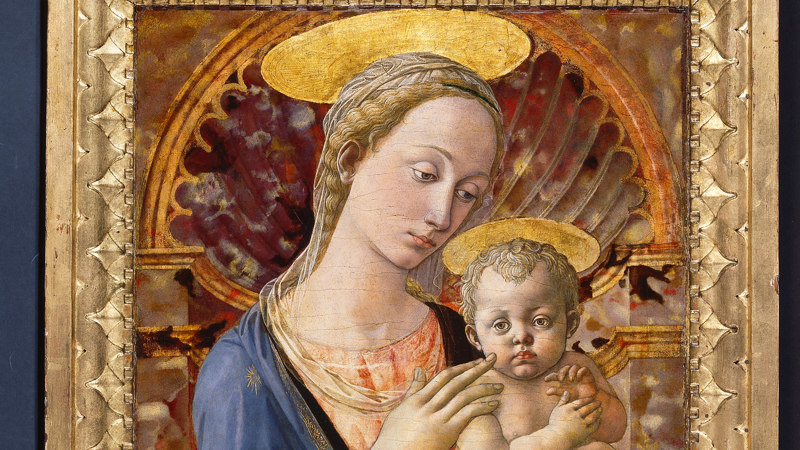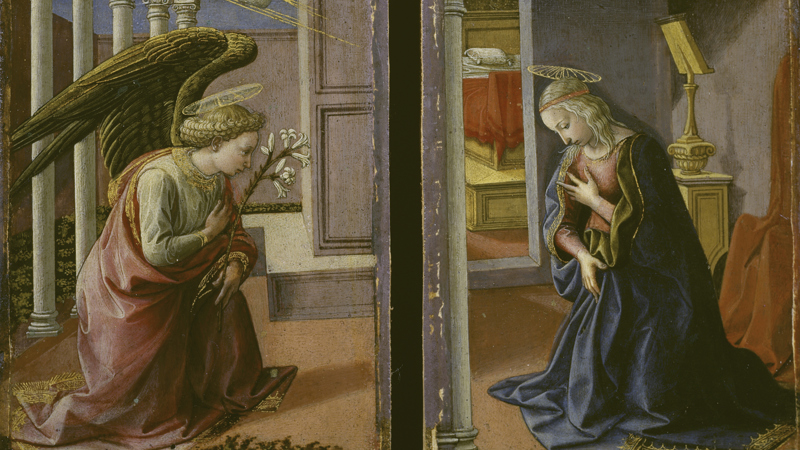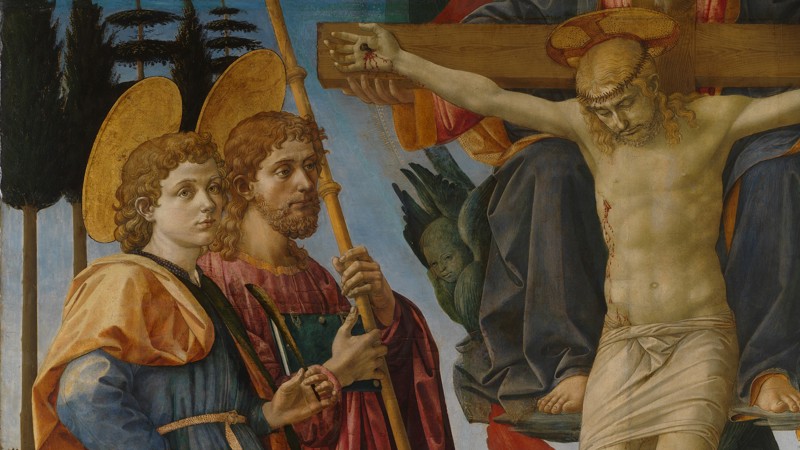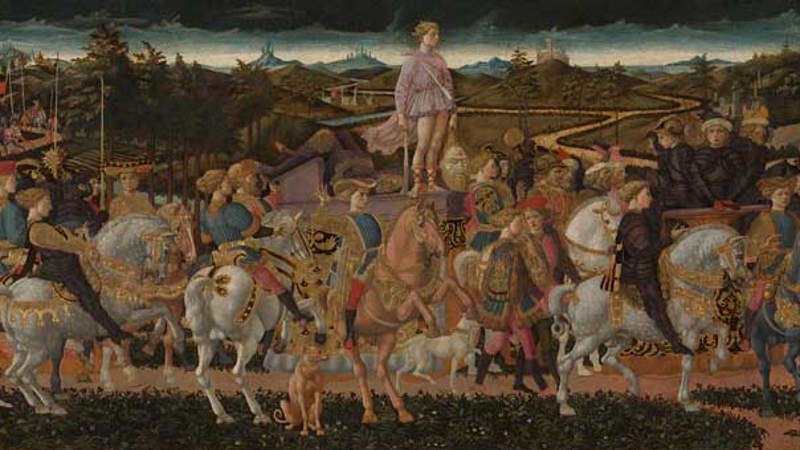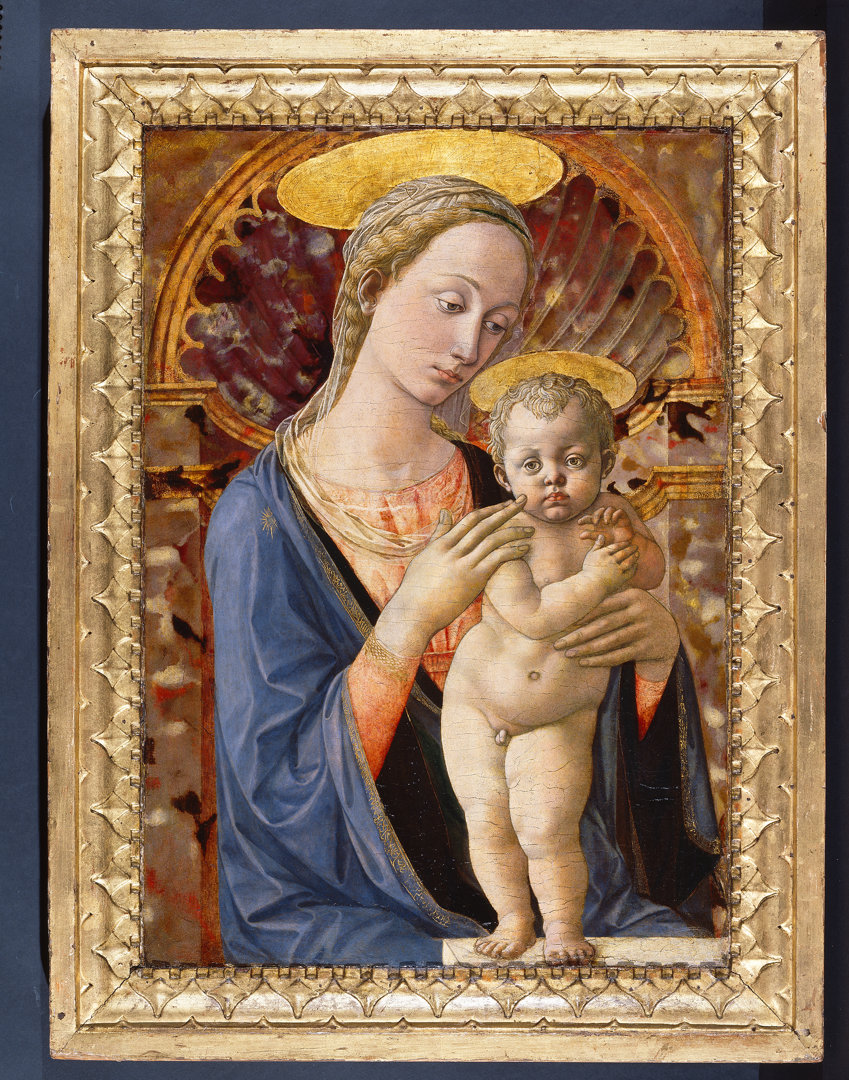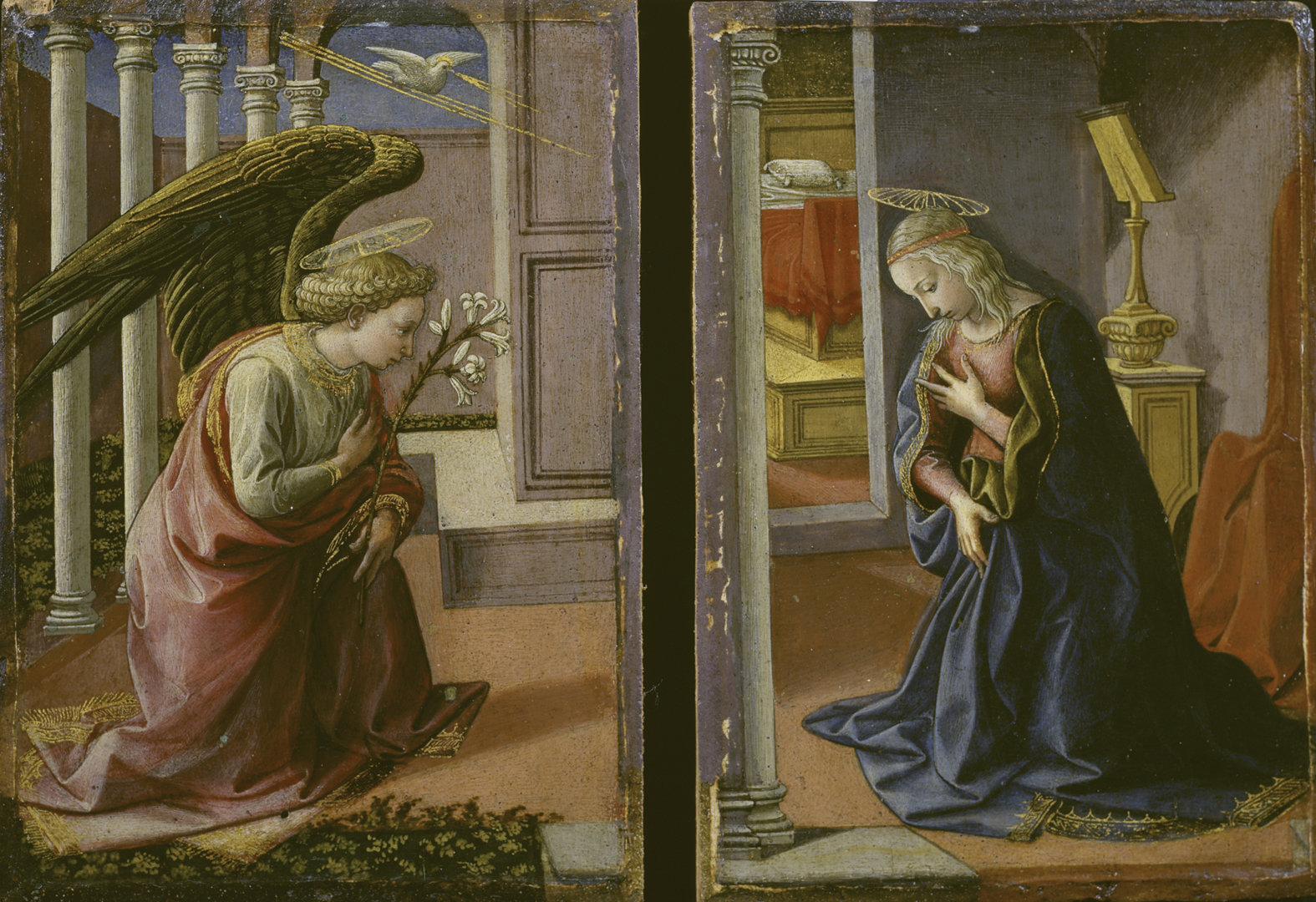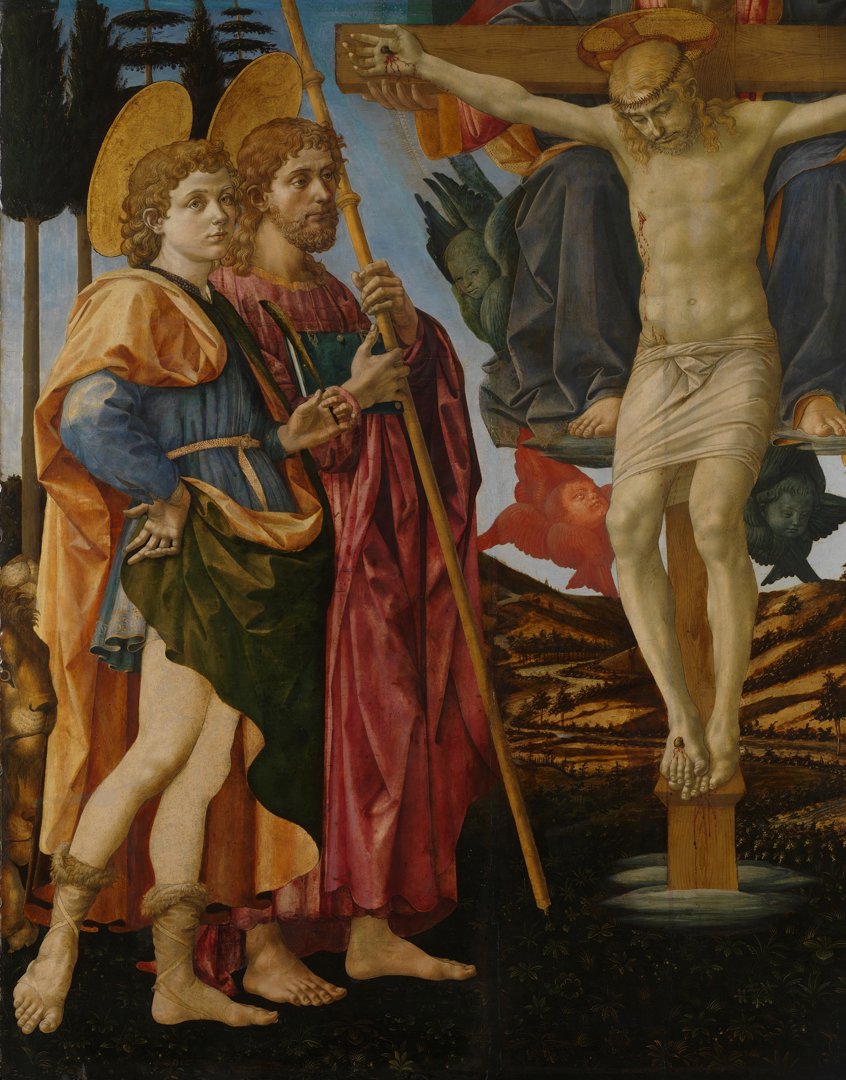Encounter a forgotten Renaissance master in the first-ever career-spanning exhibition at the National Gallery
'Pesellino: A Renaissance Master Revealed'
The National Gallery
7 December 2023 – 10 March 2024
Room 46
Admission free
The first-ever career-spanning exhibition dedicated to the Renaissance painter Francesco Pesellino (about 1422–1457) opens at the National Gallery in December 2023.
Active in Florence in the mid-15th century, Pesellino achieved a notable career but his early death at 35 and the subsequent misattribution of his surviving works have made him one of the greatest Renaissance painters that few people have heard of. This exhibition seeks to remedy that by presenting a monographic display of Pesellino’s achievements through his works in the National Gallery Collection as well as key works from across Europe and the USA, including the Clark Art Institute, Williamstown, USA, the Musée du Louvre, Paris, the Musée des Beaux-Arts, Lyon, and The Courtauld Gallery, London.
Born Francesco di Stefano in around 1422, he was known as Pesellino, after his grandfather Pesello who raised him and likely introduced him to painting. Pesellino’s painterly ambition, however, far outstripped his grandfather’s and he probably gained experience with other painters given his ability across media.
Defining features of Pesellino’s career were his exceptional talent in the painting of 'cose picole' [sic] (small things), his propensity for working in collaboration and his commissions by Florence’s ruling Medici family. These three characteristics contributed to establishing Pesellino’s reputation among early chroniclers and historians.
The National Gallery is uniquely placed to introduce Pesellino’s work to a broader audience given the presence in its collection of two of his undisputed masterpieces; two cassone (chest) panels depicting the Story of David, about 1453‒5, and the magnificent Pistoia Santa Trinità Altarpiece, 1455‒60.
Fifty years on from when they were first displayed at the National Gallery, the two 'Story of David' panels form the centrepiece of the exhibition. Probably dating from the last years of his career, they demonstrate the depth and breadth of Pesellino’s talents as a painter of complex narratives, ceremonial splendour, animals, and intricate detail. The panels have recently undergone an extensive conservation project and viewers can newly appreciate the care with which Pesellino designed and executed these remarkable works of art.
Displayed in the round, in cases, visitors can get closer to these intricate works than ever before and appreciate them not just as works of art, but also as objects intended for domestic use in the Renaissance home. Key to this redisplay is the opportunity to untangle Pesellino’s symbolism, which is at times playful and witty. Such symbols and heraldic devices which, scattered throughout the panels’ imagery, and even the subject of David himself, hint that these panels were a Medici commission.
From the domestic to the divine, the 'Pistoia Trinity Altarpiece' is one of only two large-scale altarpieces Pesellino is known to have produced. Left unfinished at his death, it was completed in the workshop of Filippo Lippi, for whom Pesellino had completed a predella for the Novitiate chapel in Santa Croce 15 years earlier. This is the earliest 'pala' (an altarpiece with a single main panel) in the National Gallery. As one of the few nearly complete altarpieces in the collection, the work reveals much about Pesellino’s posthumous reputation.
Pesellino’s early death clouded his legacy: his works were completed by collaborators such as Lippi, and the attributions of his works and those of his grandfather became confused by later writers. However, even given his short life, Pesellino had a significant influence on the artists that came after him. Giorgio Vasari included him in his 'Lives of Artists', writing ‘From what we know of him, if he had lived longer, he would have achieved much more than he did’. Although his career as a painter of altarpieces was cut short, his small-scale devotional works also inspired the following generation of painters: his 'Madonna and Child' (1450s), kindly lent by the Musée des Beaux-Arts, Lyon, has between twenty and thirty known imitations.
The exhibition is accompanied by the first fully illustrated catalogue dedicated to the artist to be published in English. This is also the first book-length publication on the artist in over 120 years.
Dr Laura Llewellyn, Curator of Italian Paintings before 1500, says: ‘Works by Pesellino are rare indeed, but at the National Gallery we are lucky enough to have two of his undisputed masterpieces in the collection. The recent conservation treatment of the magnificent Stories of David panels has provided an opportunity to bring this remarkable though little-known painter into the spotlight and to celebrate his achievements with the first-ever exhibition dedicated to his short career.’
The H J Hyams Exhibition Programme
Supported by The Capricorn Foundation
Exhibition supported by
The Vaseppi Trust
Mr and Mrs Giuseppe Ciucci
Count and Countess Emilio Voli
![]()
Notes to editors
Press View: Monday 4 December 2023
The National Gallery is one of the greatest art galleries in the world. Founded by Parliament in 1824, the Gallery houses the nation’s collection of paintings in the Western European tradition from the late 13th to the early 20th century. The collection includes works by Bellini, Cézanne, Degas, Leonardo, Monet, Raphael, Rembrandt, Renoir, Rubens, Titian, Turner, Van Dyck, Van Gogh and Velázquez. The Gallery’s key objectives are to enhance the collection, care for the collection and provide the best possible access to visitors. Admission free.
Also on display at the National Gallery at the same time:
Céline Condorelli: Artist In Residence (13 September 2023 – 7 January 2024)
The Credit Suisse Exhibition: Frans Hals (30 September 2023 – 21 January 2024)
Discover Liotard & the Lavergne Family Breakfast (16 November 2023 – 3 March 2024)
FOR MORE INFORMATION
National Gallery Press Office on 020 7747 2865 or email press.external@nationalgallery.org.uk
Publicity images can be obtained from https://press.nationalgallery.org.uk/
Twitter @nationalgallery
Facebook @thenationalgallery
Instagram #nationalgallery
YouTube The National Gallery

